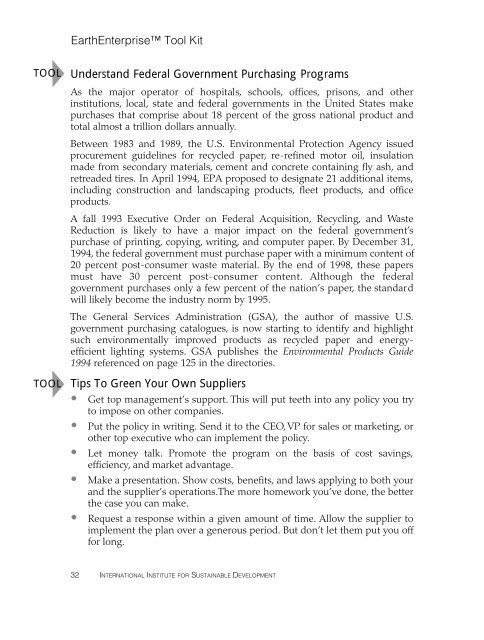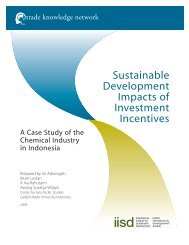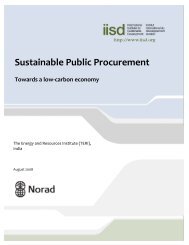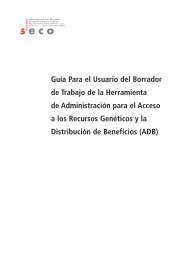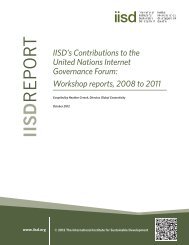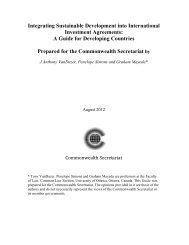Earthenterprise Tool Kit - International Institute for Sustainable ...
Earthenterprise Tool Kit - International Institute for Sustainable ...
Earthenterprise Tool Kit - International Institute for Sustainable ...
Create successful ePaper yourself
Turn your PDF publications into a flip-book with our unique Google optimized e-Paper software.
EarthEnterprise <strong>Tool</strong> <strong>Kit</strong><br />
TOOL<br />
TOOL<br />
Understand Federal Government Purchasing Programs<br />
As the major operator of hospitals, s c h o o l s , o f f i c e s , p r i s o n s , and other<br />
institutions, local, state and federal governments in the United States make<br />
purchases that comprise about 18 percent of the gross national product and<br />
total almost a trillion dollars annually.<br />
Between 1983 and 1989, the U.S. Environmental Protection Agency issued<br />
procurement guidelines <strong>for</strong> recycled paper, re-refined motor oil, insulation<br />
made from secondary materials, cement and concrete containing fly ash, and<br />
retreaded tires. In April 1994, EPA proposed to designate 21 additional items,<br />
including construction and landscaping products, fleet products, and office<br />
products.<br />
A fall 1993 Executive Order on Federal Acquisition, Recycling, and Waste<br />
Reduction is likely to have a major impact on the federal government’s<br />
purchase of printing, copying, writing, and computer paper. By December 31,<br />
1994, the federal government must purchase paper with a minimum content of<br />
20 percent post-consumer waste material. By the end of 1998, these papers<br />
must have 30 percent post-consumer content. Although the federa l<br />
government purchases only a few percent of the nation’s paper, the standard<br />
will likely become the industry norm by 1995.<br />
The General Services Administration (GSA), the author of massive U.S.<br />
government purchasing catalogues, is now starting to identify and highlight<br />
such env i ronmentally improved products as re cycled paper and energ y -<br />
efficient lighting systems. GSA publishes the Environmental Products Guide<br />
1994 referenced on page 125 in the directories.<br />
Tips To Green Your Own Suppliers<br />
• Get top management’s support. This will put teeth into any policy you try<br />
to impose on other companies.<br />
• Put the policy in writing. Send it to the CEO, VP <strong>for</strong> sales or marketing, or<br />
other top executive who can implement the policy.<br />
• Let money talk. Promote the program on the basis of cost savings,<br />
efficiency, and market advantage.<br />
• Make a presentation. Show costs, benefits, and laws applying to both your<br />
and the supplier’s operations.The more homework you’ve done, the better<br />
the case you can make.<br />
• Request a response within a given amount of time. Allow the supplier to<br />
implement the plan over a generous period. But don’t let them put you off<br />
<strong>for</strong> long.<br />
32<br />
INTERNATIONAL INSTITUTE FOR SUSTAINABLE DEVELOPMENT


